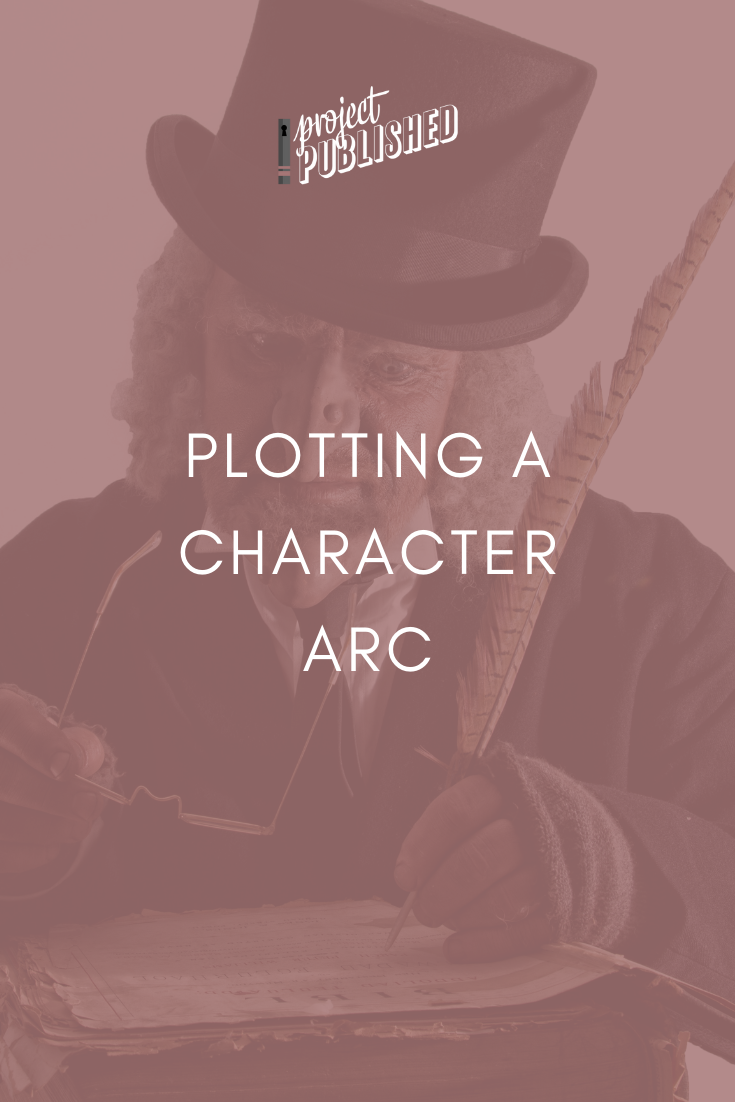Plotting a Character Arc
Today I am going to break down (in a very loose and messy way) a successful character arc.
We’ll discover:
How to write a character arc in a way that resonates with the viewer/reader
What pattern a character arc follows
In its most general sense, a character arc is showing the journey that a character takes from one way of being to another. It’s their transformation. For easy reference, I always refer to Scrooge going from crotchety, selfish, and greedy, to generous and joyful by the end of his story.
But how do you do it? That’s the question I find myself asking all the time, with every new book I start. So I decided to break it down a little bit. Without getting too in the weeds, I wanted to see the pattern of a character arc from beginning to end. I wanted to understand what scenes were important to include along the way and how they played into the arc so that it built into something satisfying.
So I turned to a story I love that, on a recent viewing, had very obvious points of contact for the protagonist’s character arc.
The story is To All the Boys I’ve Loved Before, and we will be taking a look at Lara Jean’s character arc.
Here are the important elements of a character arc you will need to understand:
Lie: (the thing Lara Jean believes that is keeping her from growing) I am invisible
Truth: (the thing Lara Jean will need to start believing in order to complete her arc) I see myself and others
Flaw: (an aspect of Lara Jean’s lie that is harmful to others) she doesn’t see others because she is caught up in believing she is not seen
Now, throughout Lara Jean’s story, we are either seeing her succumbing to her lie/flaw or catching glimpses of her embracing her truth and overcoming that flaw. We will know she has completed her arc when Lara Jean has fully and completely rejected her lie and embraced her truth.
Notes: Lara Jean feels invisible, but she’s actually bringing it on herself because she’s afraid to be seen. She needs to learn to see herself (and others) and to let herself be seen.
In an effort to keep this short and simple, I have chosen 15 check-in points that draw attention to Lara Jean’s character arc and show her progress or regression. These are not necessarily all of her check-in points. In truth, nearly every scene in a story could have a check-in with the character arc. But they are all significant and move Lara Jean forward as a character.
In each check-in point, I will designate whether that scene is highlighting Lara Jean’s LIE, FLAW, TRUTH, or some combination of these.
Here we go.
Check-in points:
Lara Jean watches Josh come into her home, she is hiding behind the stair post. LIE
Lara Jean looks at her love letters, explaining in narration what they are. LIE
CONFLICT: Lara Jean’s letters are sent out - she panics. LIE
Lara Jean runs away from Josh on the track field. FLAW
Lara Jean tries to hide from Josh when he comes to her house to talk (Peter seeks her out - this is our first inkling that Peter is what she needs in order to overcome her lie). FLAW, GLIMPSE OF TRUTH
During a daydream, Peter quiets Josh (the voice that is making Lara Jean want to hide). GLIMPSE OF TRUTH
Peter pushes Lara Jean to go to a party. GLIMPSE OF TRUTH
Lara Jean opens up to Peter at the diner after the party. GLIMPSE OF TRUTH
Lara Jean talks with Peter after dinner with his family (she is not only allowing herself to be seen here, but is actually seeing Peter). GLIMPSE OF TRUTH
Lara Jean overhears Peter and Genevieve talking under the bleachers (she is literally invisible to them here). LIE
Lara Jean avoids Peter on the bus to the ski trip. LIE, FLAW
Lara Jean opens herself fully to Peter in the hot tub, letting herself be vulnerable. GLIMPSE OF TRUTH
After the hot tub, Lara Jean gets scared and shuts Peter out. LIE, FLAW
REALIZATION: Lara Jean confronts Genevieve in the bathroom at school, Lara Jean realizes not only is she not invisible, but she has failed to see others. LIE, FLAW, FINAL PUSH TOWARDS TRUTH.
Lara Jean embraces her truth by letting herself be fully seen when she writes a new letter and delivers it to Peter in the lacrosse field. EMBRACE TRUTH
The reason for studying other successful stories is to look for patterns and techniques that we can use in our own writing. Do you see a pattern above? It goes something like this:
Show Lie (status quo)
Show Flaw (status quo)
Show Glimpse of Truth (progress)
Show Lie making a comeback (regression)
Show another Glimpse of Truth (progress)
Show Lie/Flaw making an even stronger comeback (regression)
Show fully realization of Lie and Truth (final push towards truth)
Show an Embrace of Truth (new status quo/transformation)
Whew. This is my doing me very best to keep this short and simple. I could definitely delve a lot deeper, but in truth, this breakdown offers plenty in the way of examining our own character arcs and asking the questions that will help us make them better.
Are we effectively showing the character’s lie? Their flaw? Is it clear what their truth is? Are we throwing obstacles in our character’s way that challenge their lie, causing them to both progress forward and regress?


